I know I don't do as many bee reports on the blog as I used to but in a lot of respects our bees do the same thing over and over. Not that I don't delight in watching the hive, but how often can I report the same thing? Things that are fun to check are larvae. I especially like frames with black foundation, makes things ten times easier to see and it really pops the color of the bees.
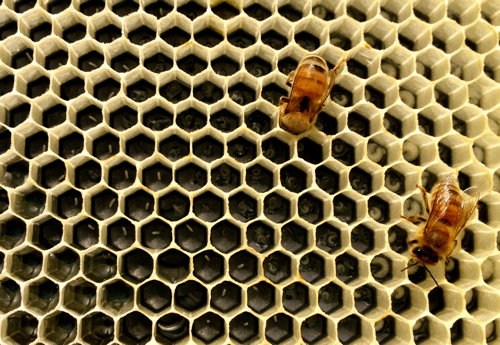
Above are mostly worker bee eggs (the things that look like mini rice) and some larvae off to the right. If you don't find your queen when you're digging around in your hive, you can be relatively confident that a she is alive somewhere in there because eggs stay in that shape for about three days as they are fed royal jelly from the worker bees.
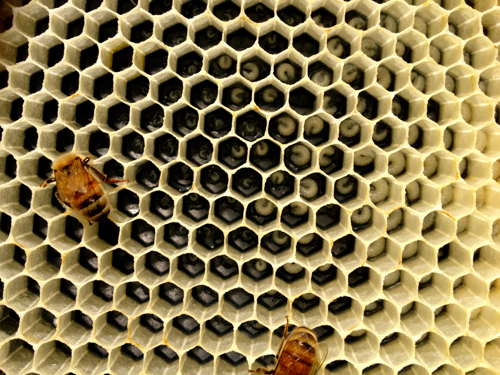
Once the larvae is three days old, it's switched to a mixture of pollen, honey and water (some bee sites call this bee bread). You can see at least one worker up there feeding someboyd as her head is wedged into a cell. The larvae grows and eats for six days.

After six days, the workers cap over the brood and they pupate for 12 days as they go from a squishy blob into a segmented, leggy, winged bee complete with stinger.
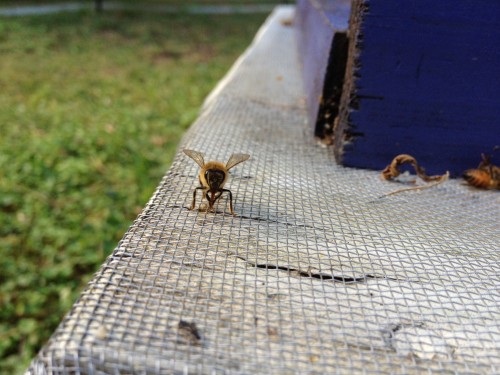
Like this girl! On a side note, while looking up something else entirely I wandered into an article on eating bee larvae. I suppose eating all that honey would make them tasty.
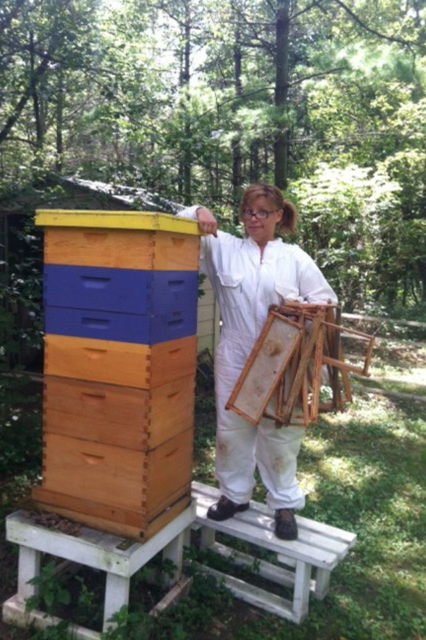
For those curious, I think our hives are doing splendidly this year. Many are as tall or even taller than I am because they are stacked with so many honey supers for us to harvest soon. Though, Lynne was quick to point out that since I'm only 5 feet tall, that's not saying much. Thanks, Lynne. ;)





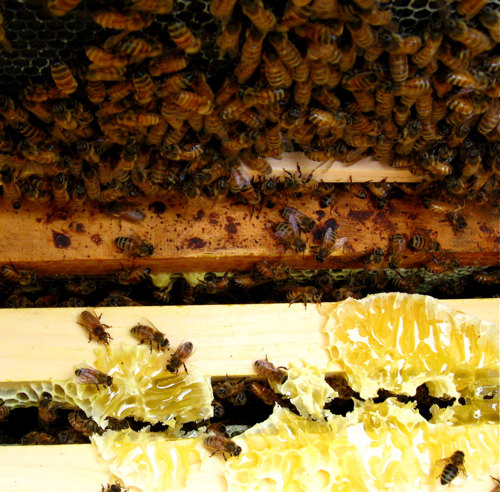 After having all of our beehives die this past winter, it's so nice to finally have a warm spring day and look in to see bees industriously tending brood and filling up empty comb. Our Italian bees are filling up hives like crazy, but the Russians and Carniolans are at a slow and steady pace.
After having all of our beehives die this past winter, it's so nice to finally have a warm spring day and look in to see bees industriously tending brood and filling up empty comb. Our Italian bees are filling up hives like crazy, but the Russians and Carniolans are at a slow and steady pace.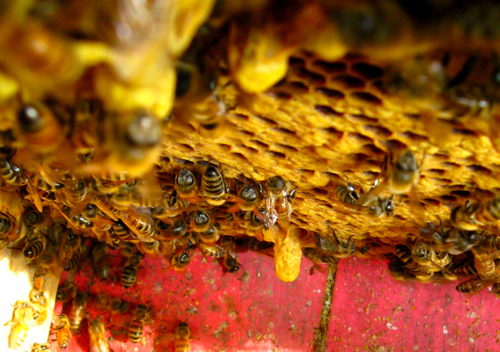 Russians are known for smaller hives and to always have queen cells on hand to replace a failing queen if need be. Even though this Russian hive had plenty of space, she had queen cells ready to go. I doubt she'll swarm, but if she does, we have an empty hive near by that they are welcome to move into. It was just Non Birding Bill and I out at the hives this time and we noted that the Russians make more noise than our other hives, but didn't bonk us to warn us they were about to sting.
Russians are known for smaller hives and to always have queen cells on hand to replace a failing queen if need be. Even though this Russian hive had plenty of space, she had queen cells ready to go. I doubt she'll swarm, but if she does, we have an empty hive near by that they are welcome to move into. It was just Non Birding Bill and I out at the hives this time and we noted that the Russians make more noise than our other hives, but didn't bonk us to warn us they were about to sting.
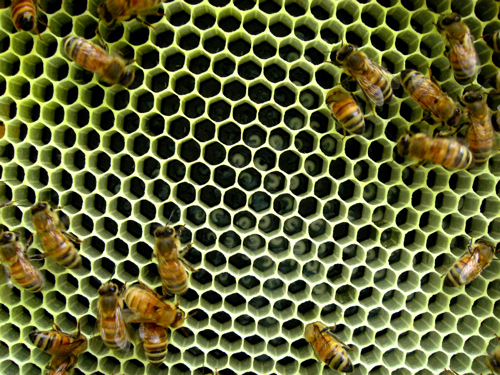
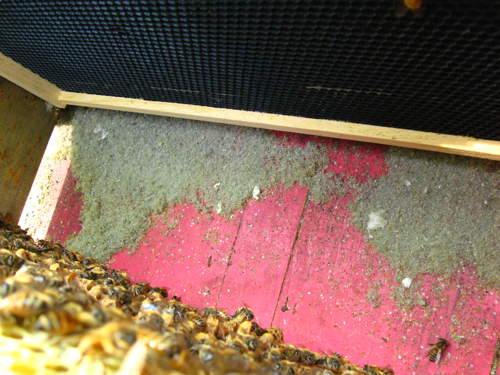
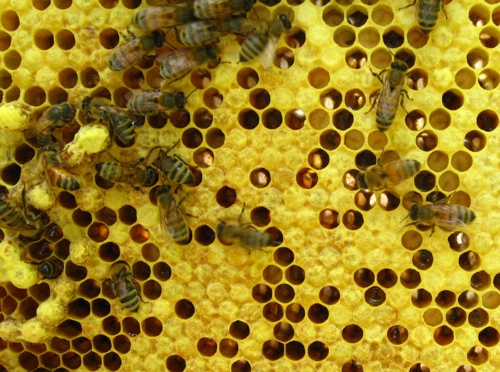
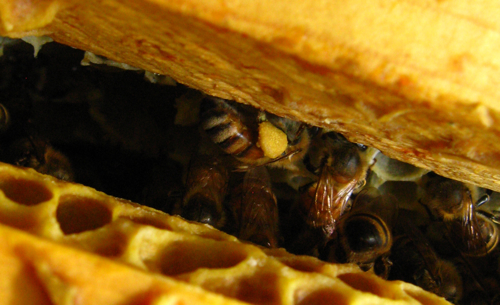
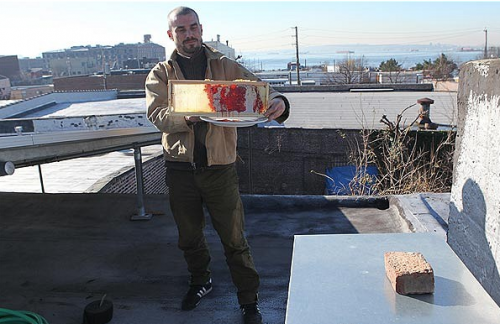 Last week,
Last week, 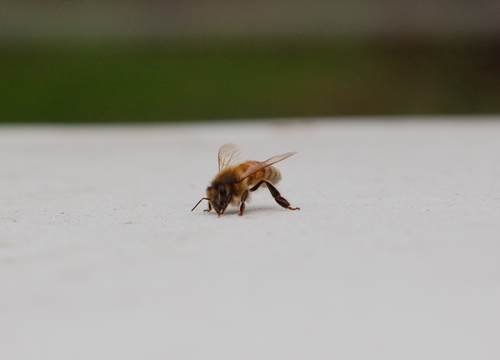 The lone bee!
The lone bee!
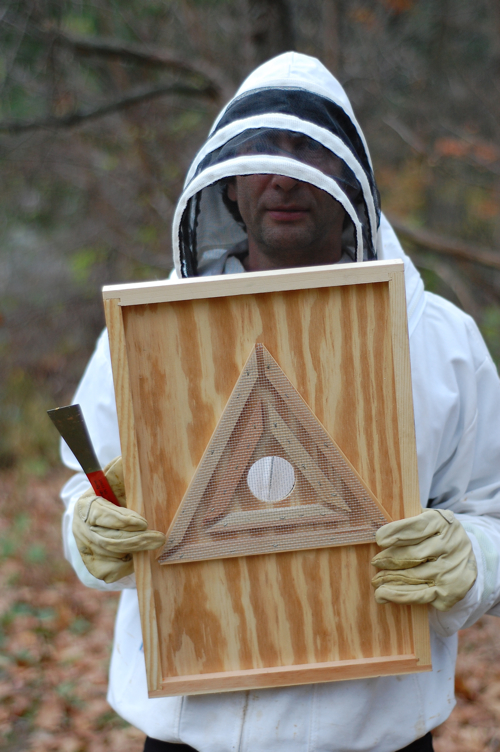
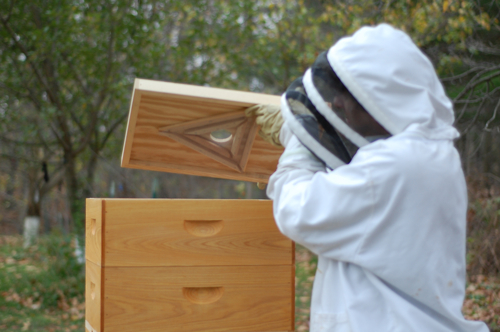 You place the escape on top of the supers or boxes that you do not want to remove and place it so the triangle side is on the inside of the hive. The top has a hole, the bees crawl down that and out the triangle to join the rest of the hive at night. The next day, when they try to return to the other honey supers, they can't figure out the triangle maze and don't go back.
You place the escape on top of the supers or boxes that you do not want to remove and place it so the triangle side is on the inside of the hive. The top has a hole, the bees crawl down that and out the triangle to join the rest of the hive at night. The next day, when they try to return to the other honey supers, they can't figure out the triangle maze and don't go back.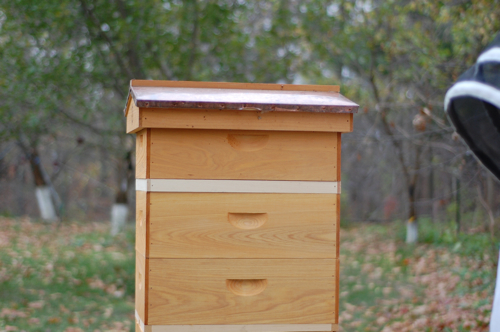
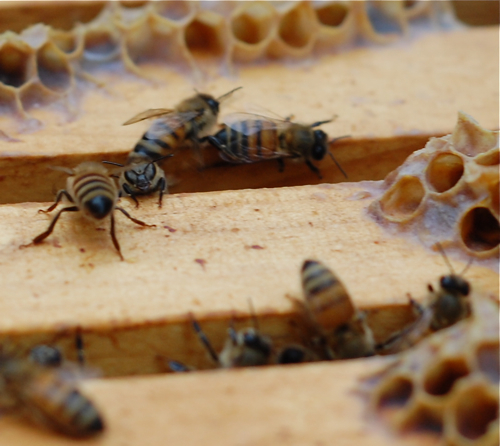
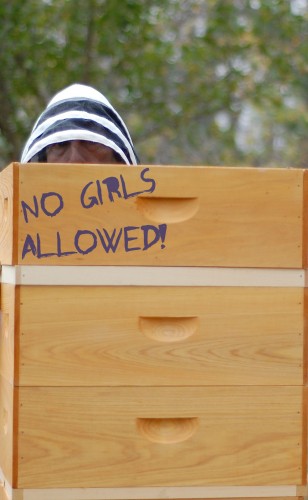



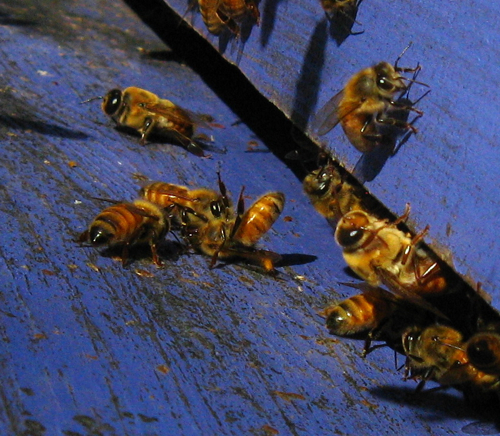 I always love when I catch bees making little mistakes with m camera--like falling when landing. It happens a lot. Bees are not perfect creatures.
I always love when I catch bees making little mistakes with m camera--like falling when landing. It happens a lot. Bees are not perfect creatures.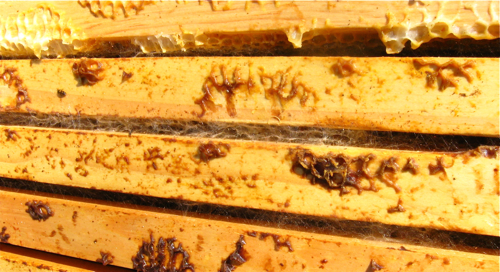
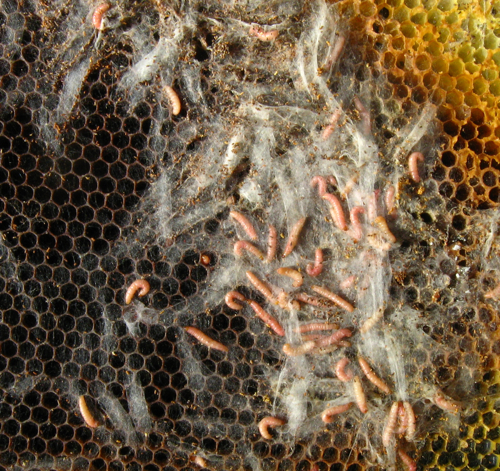
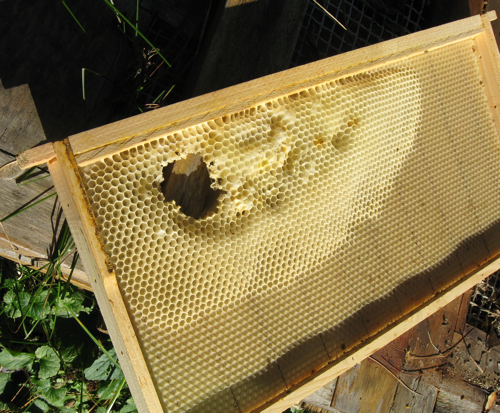
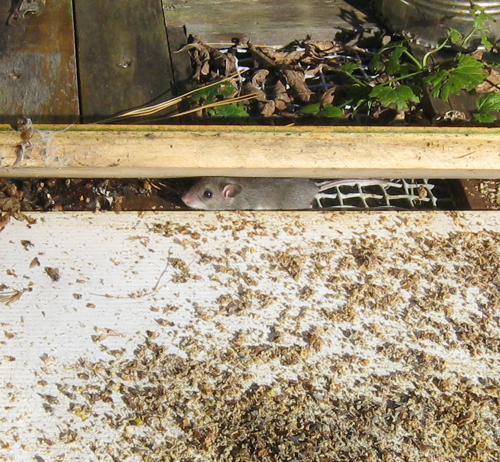
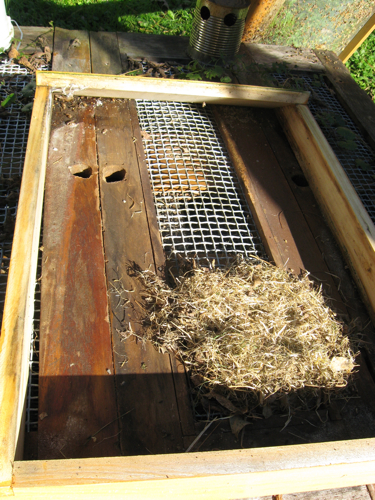
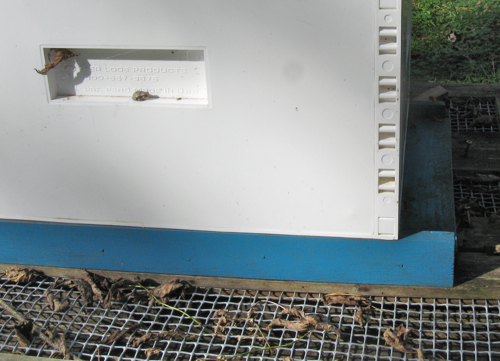
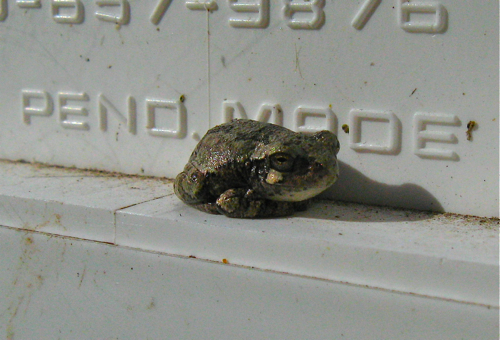
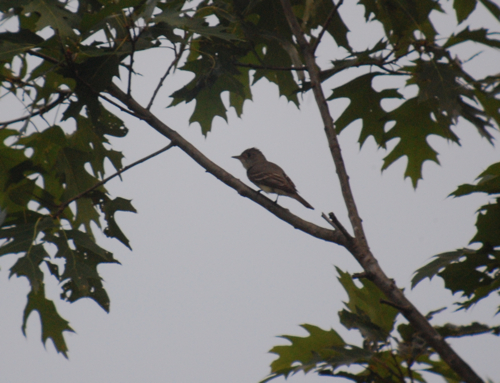 This is an interesting little bird. It's an
This is an interesting little bird. It's an